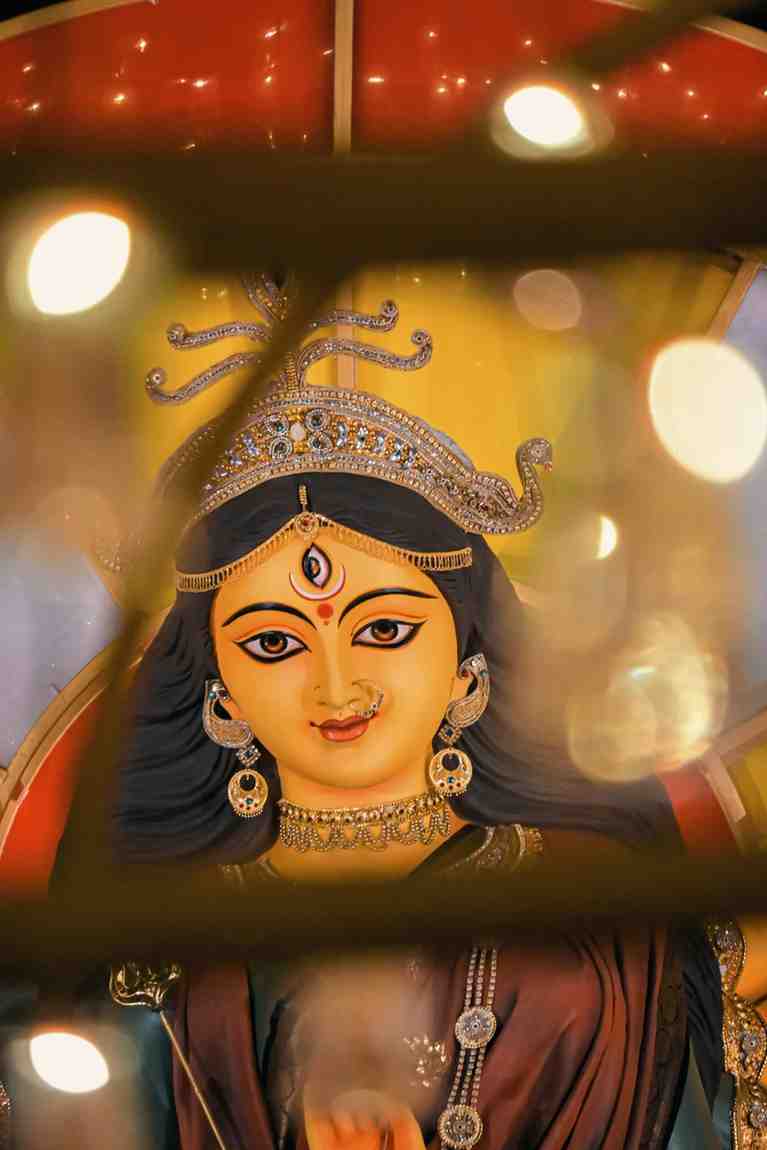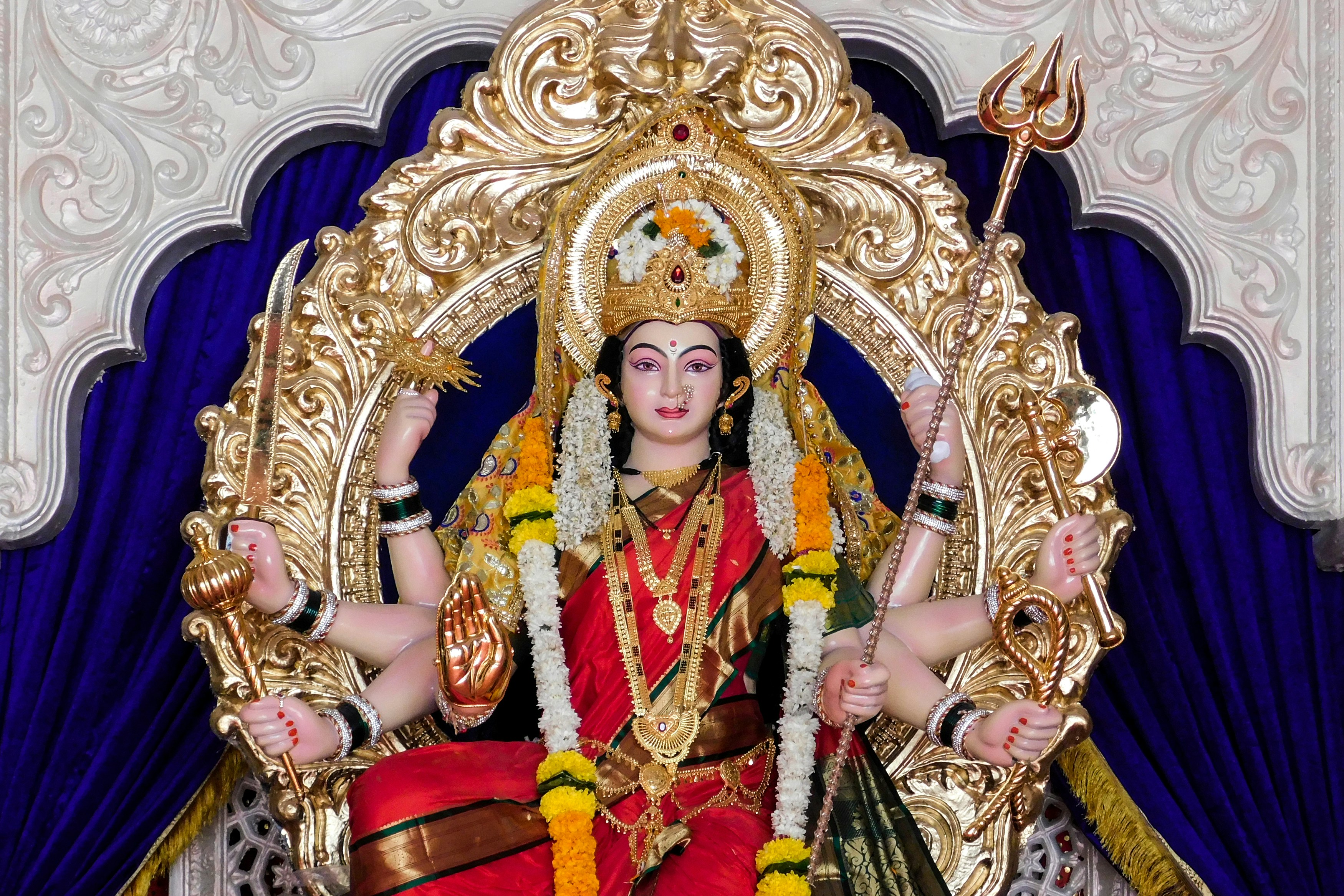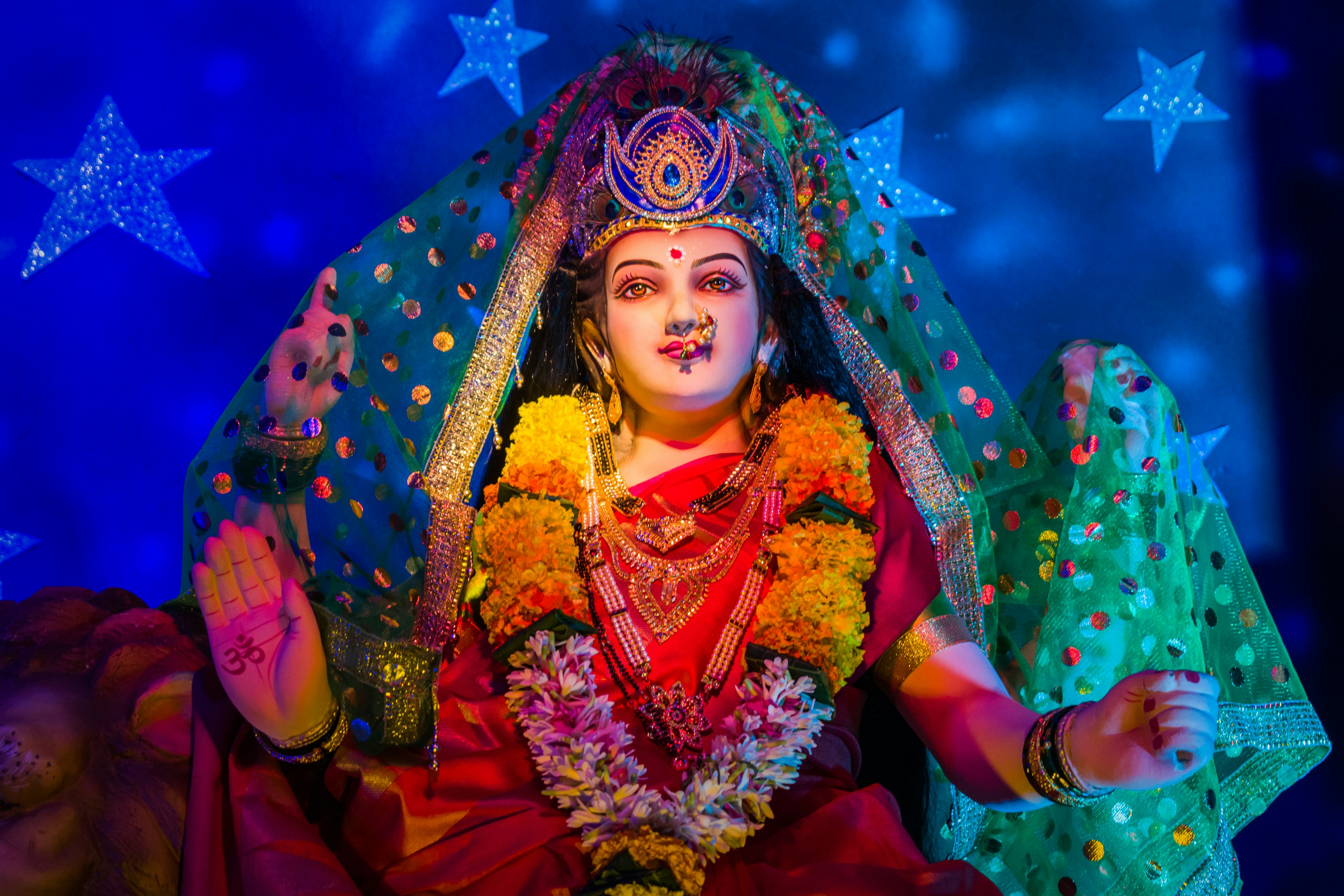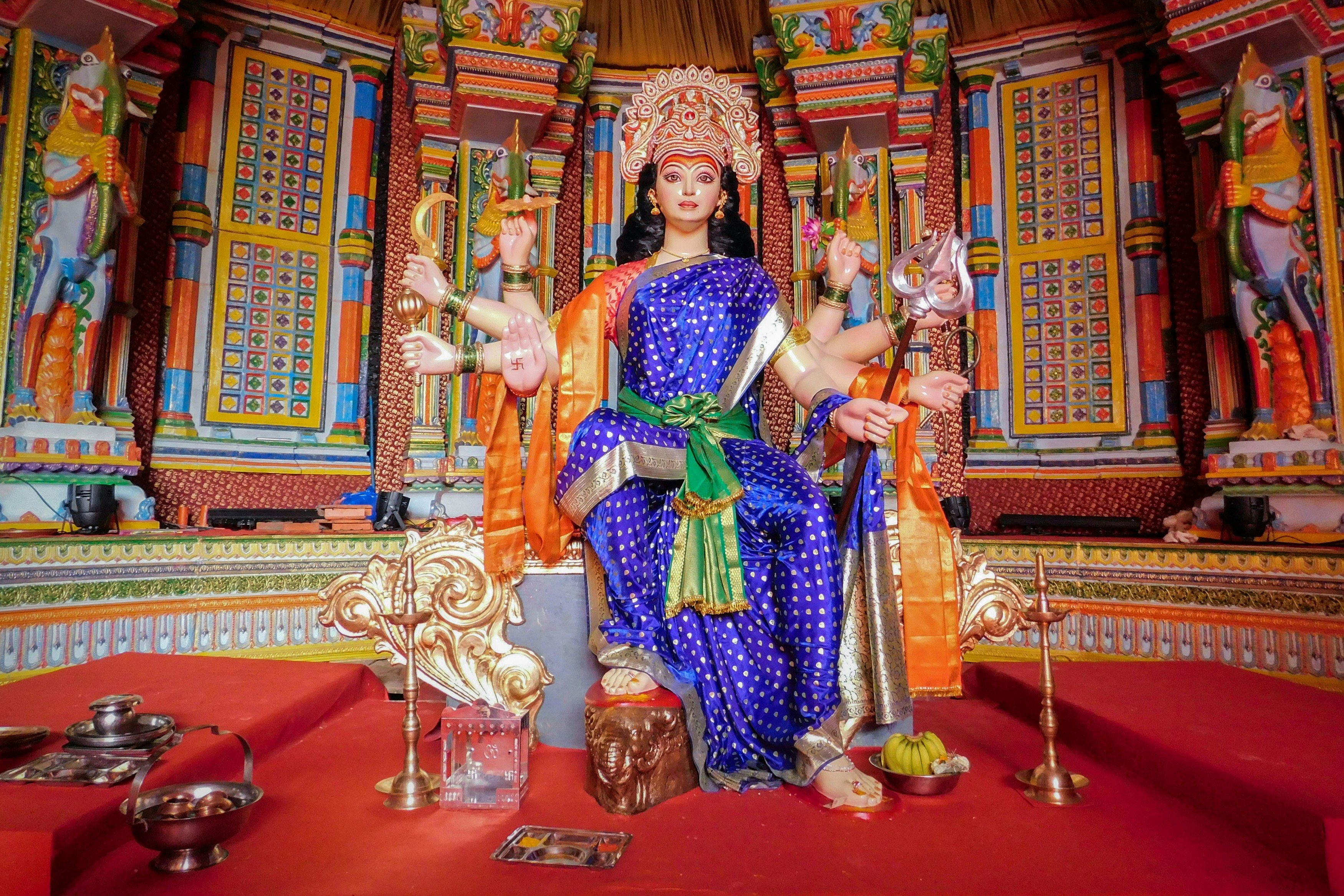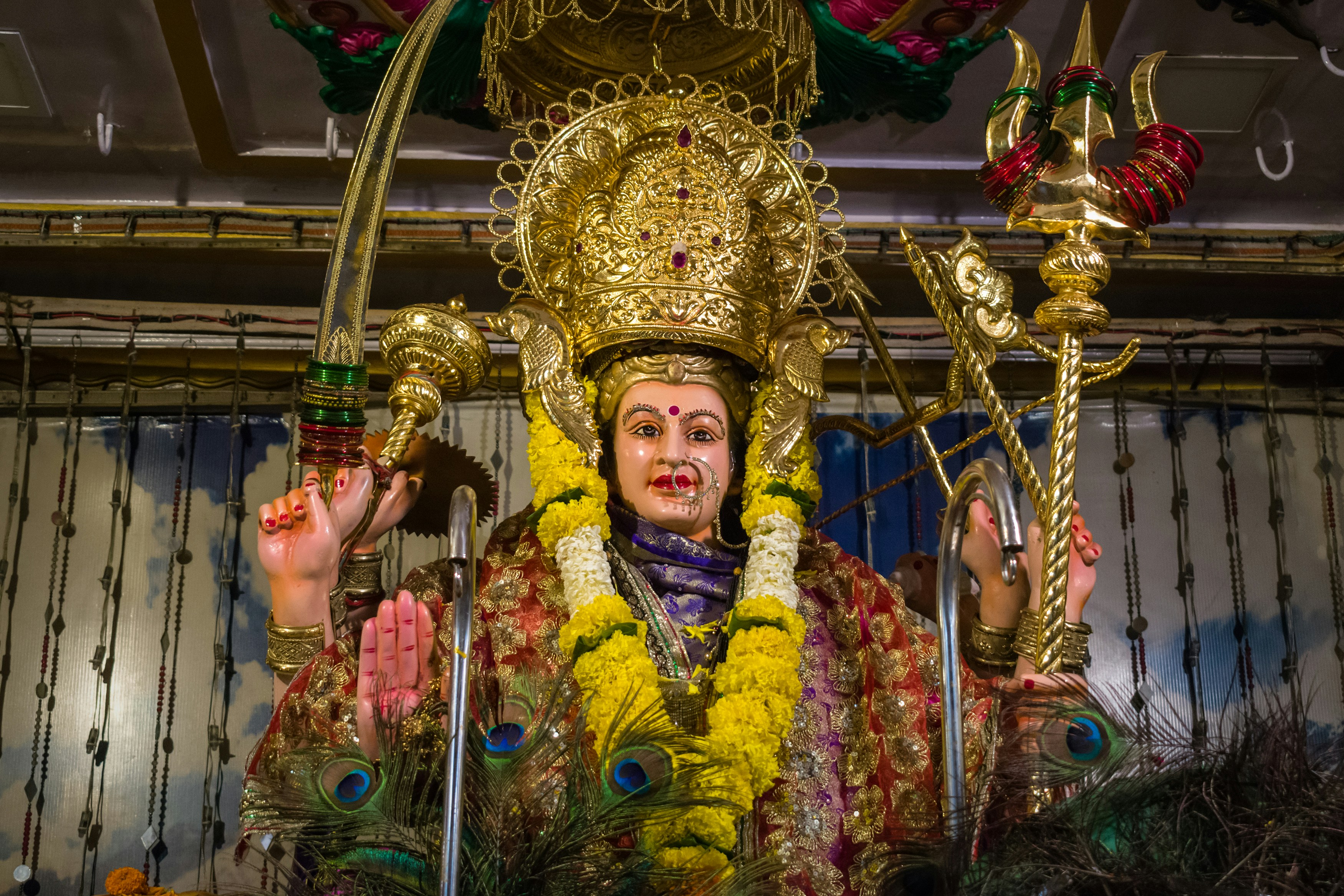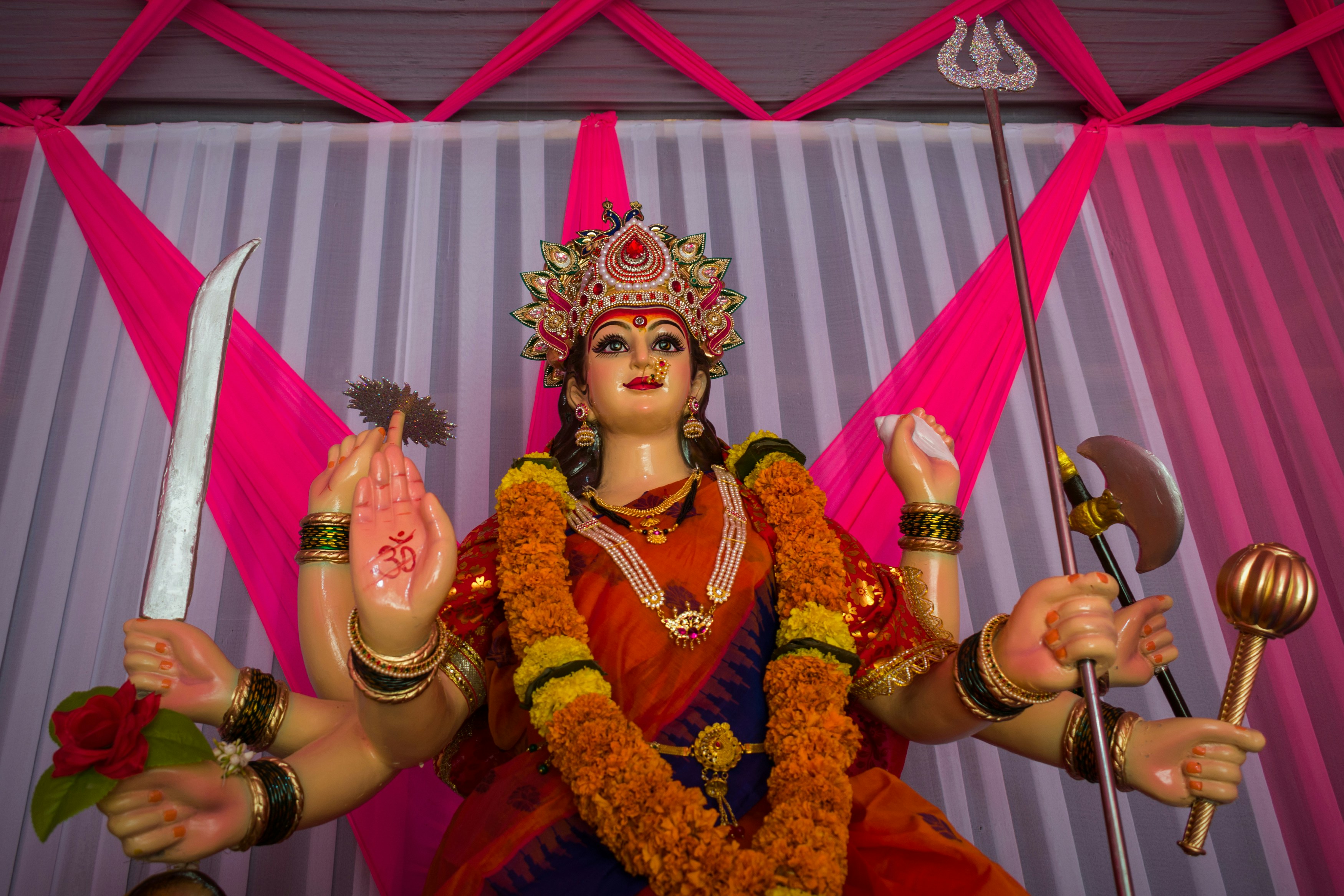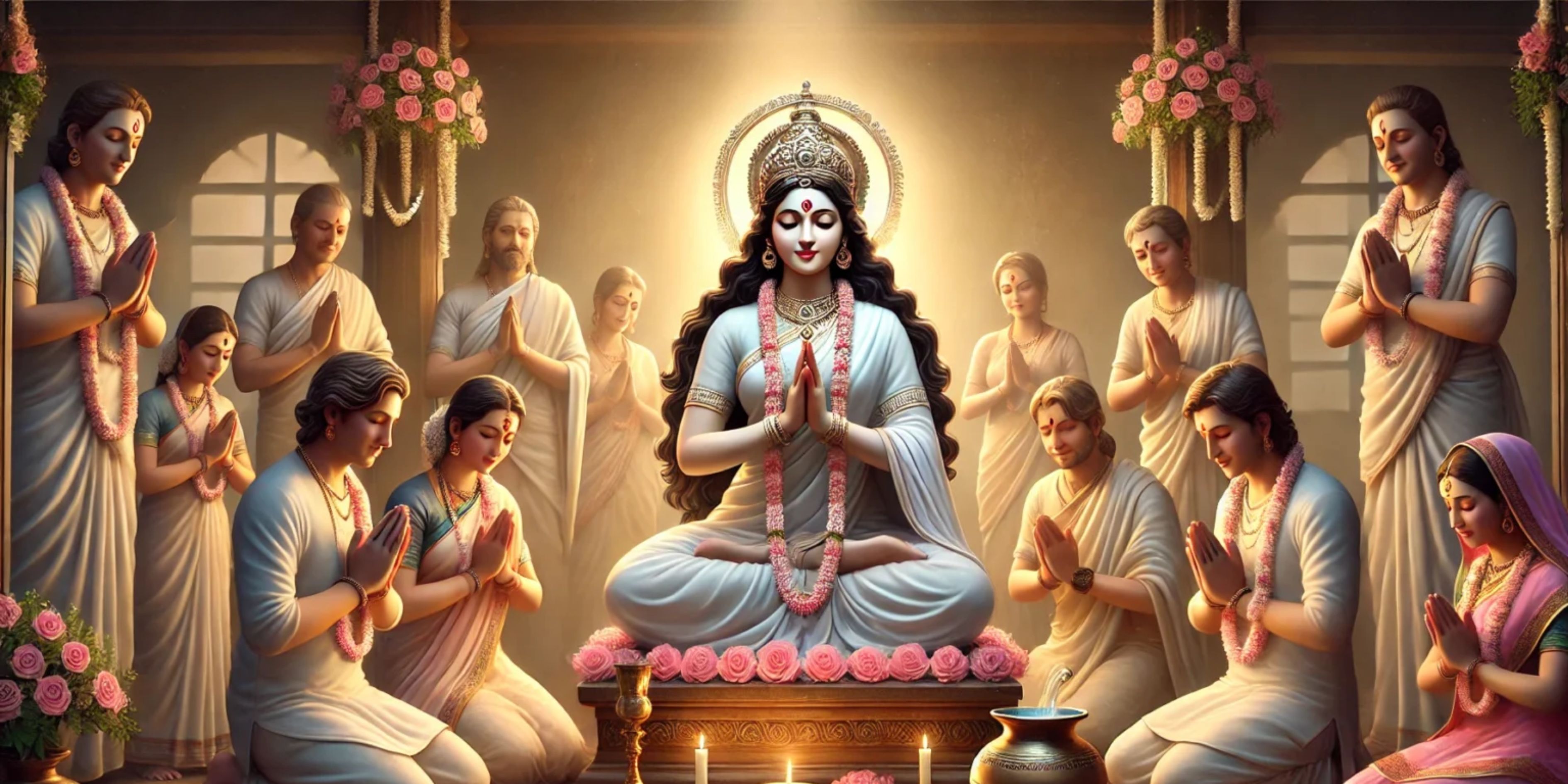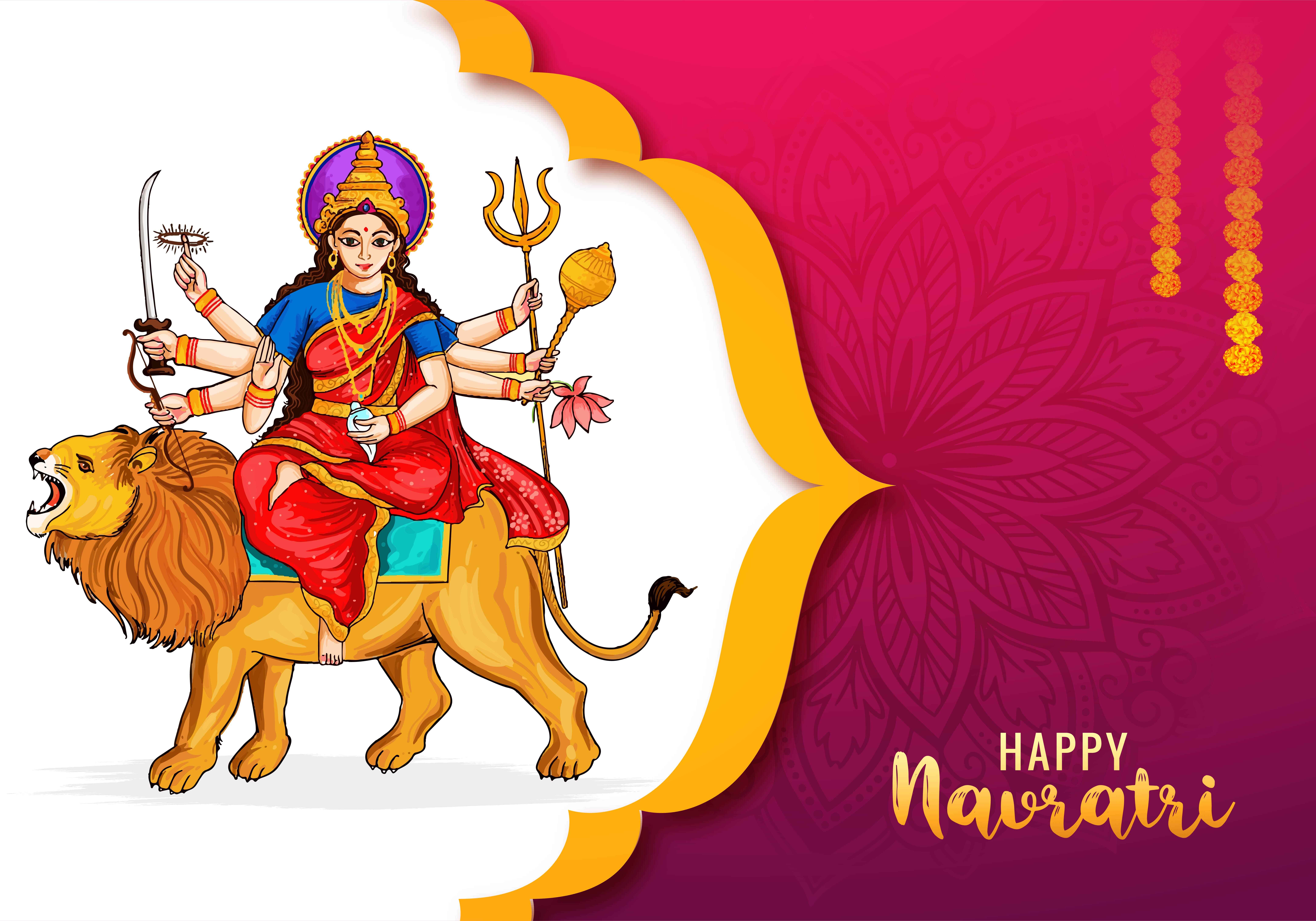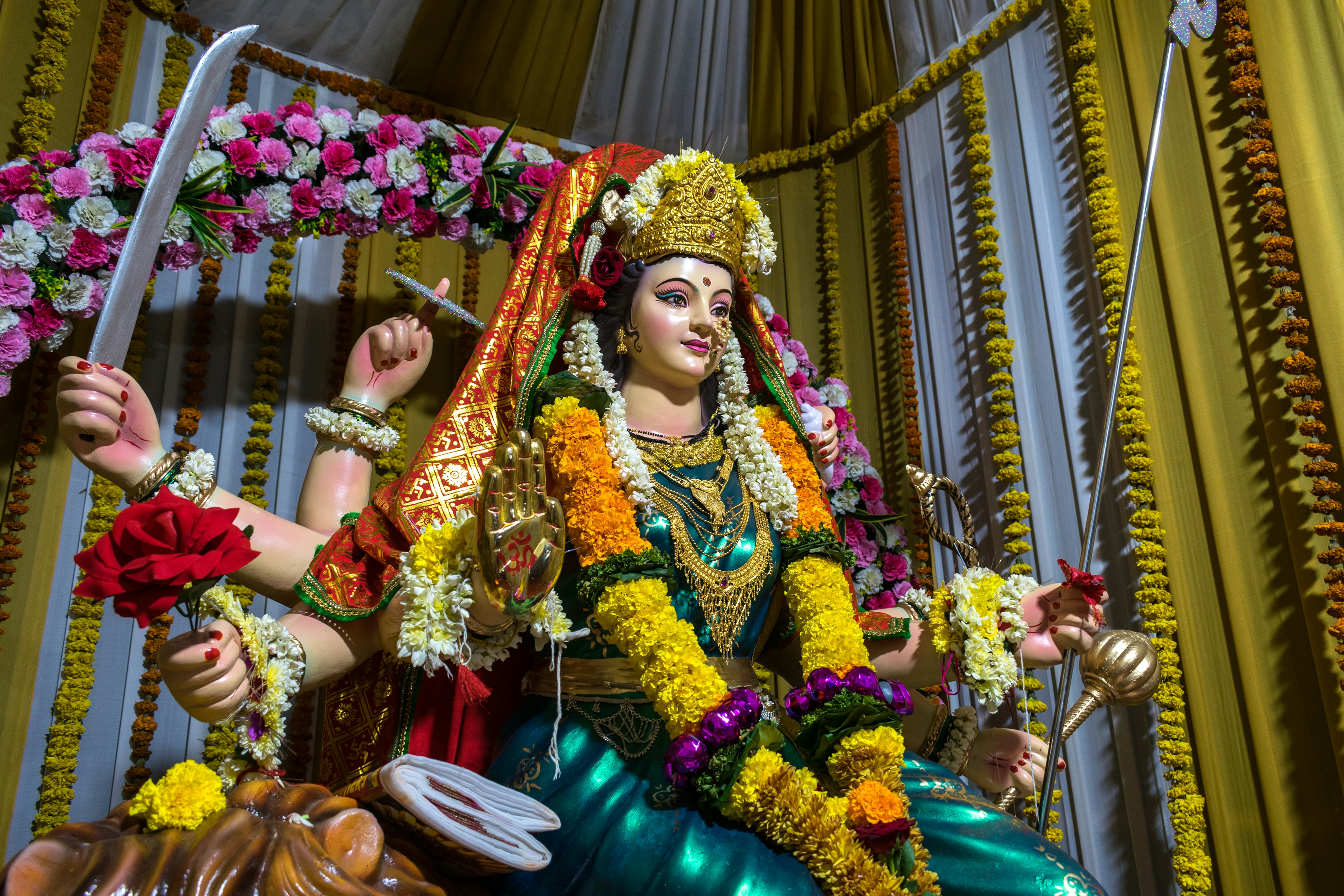Introduction
By day five, Navratri doesn't feel new anymore; it's routine, as in, it's breath. The Kalash's barley has grown to be tall, nearly as if there's a small field on the puja table. The अखण्ड दीपक burns calmly, smoke-blackened glass and all, but it won't go out.
In the courtyard, someone cuts bananas for prasad. The aroma is humble, not at all like the potent saffron of the previous days, but sweet in itself. Children sit around, already asking, "भोग कब मिलेगा?" The elders chuckle, reminding them that patience, too, comes under devotion.
On 26 September 2025, Panchami (पंचमी), the fifth day, is dedicated to Maa Skandamata (माँ स्कन्दमाता). Worshiped as the caring mother who cradles her child Kartikeya, she is also shown riding on a lion, reminding us that motherhood represents not just softness but also an invincible and shielding strength.
Who is Maa Skandamata? | माँ स्कन्दमाता कौन हैं?
Her very name is a story. Skanda, Kartikeya, commander of the gods. Mata, the mother who holds him. She is pictured riding a lion, four hands holding lotuses, one hand blessing, and in her lap, her child.
Her physique is remarkably remarkable. She possesses the strength to command military forces while simultaneously being depicted as a nurturing figure, cradling her child. It is common for families to convey to their offspring: “वो माँ हैं जो आशीर्वाद देती हैं और साथ ही रक्षा भी करती हैं।” This embodies the coexistence of strength and gentleness.
Timing for Muhurat and Puja | मुहूर्त और पूजा के समय
Morning, when she is worshipped. The entire house would have been roused by then — sprinkled water on the floor, flowers laid out afresh, incense smoke drifting through the rooms.
- Panchami Tithi (पंचमी तिथि): 26 September 2025
- Morning Muhurat: At sunrise until midway
- The Abhijit Muhurat lasts from 11:51 AM to 12:39 PM.
The conch is sounded. Its volume is significant. Children shield their ears, express amusement, and then bring their hands together rapidly. Elders shut their eyes, their lips articulating the initial incantations.
Colour of the Day | दिन का रंग
Colour allocated for Day 5 is grey (धूसर).
Not a celebratory color on first thought. When you witness an entire hall of soft grey sarees-clad women, or men wearing minimalist grey kurtas, you understand the richness. Grey encompasses equilibrium, not too bright, not too dull. It calms down the heart.
Numerous altars feature a strip of grey fabric upon which lotuses are arranged. The juxtaposition of the pink flowers against the grey backdrop presents a serene yet visually impactful appearance.
Procedure and material for ritual | पूजा विधि और सामग्री
Her worship is gentle, motherly.
- Puja Samagri (पूजा सामग्री)
- Idol or replica of Maa Skandamata.
- Gray cloth or clothing
- Lotus flowers (कमल)
- Bananas, fruits, and sweets
- Diya (दीपक), incense (अगरबत्ती), sandalwood paste (चंदन)
- Kalash with sprouted barley
Puja Vidhi (पूजा विधि)
The idol is situated at the central position of the altar. A diya is ignited, incense wafts into the air, and lotuses are presented as offerings. Bananas are meticulously arranged, elders frequently mention that they constitute her preferred bhog.
Then there's chanting. The bell chimes out of sync one hand faster, one hand slower but it all blurs together. The aarti flame spins in front of the goddess, children clap too briskly, and someone always laughs in between. It's comfortable, it's family.
Mantra and Prayer | मंत्र एवं प्रार्थना
मंत्र (Mantra):
ॐ देवी स्कन्दमातायै नमः ॥
Om Devi Skandamatayai Namah
स्तोत्र (Stotra):
सिंहासनगता नित्यं पद्माश्रिता करद्वया।
शुभदास्तु सदा देवी स्कन्दमाता यशस्विनी॥
Durga Saptashati prayer: आप देवी हर जगह की माता ऐसी क नमस्तस्यै नमस्तस्यै नमस्तस्यै नमो नमः॥ When the family chants these lines, the words soften. The mood is quieter than the fierce days before. It feels like sitting in a mother’s lap, safe, calm, protected.Significance of Worship
Worship means having great respect,
Mother Skandamata is worshipped as a representative of motherhood, loving and nurturing, yet also defensive.
Those blessings are said to offer:
- Compassion (करुणा) and peace
- Prosperity (समृद्धि) in the household
- Child and family welfare (बच्चों और परिव
- Development in wisdom and spirituality
She shows that motherhood itself is divine power. Not passive, but strong. Not soft, but steady.
Story of Maa Skandamata | माँ स्कन्दमाता की कथा
They say, in those times, when demons conspired against the gods, Kartikeya was born to head the war. Yet, prior to his appointment as chief, he too was just a child, and Maa Skandamata kept him on her lap. Even as she sat astride her lion, even as she showered blessings upon devotees, she hung close to her son.
That picture in itself is worship. Reminding us that a mother's protection and love itself is divine. In most households, senior citizens recount this tale to little ones during Navratri nights, concluding it with one of life's simplest truths: "माँ की गोद ही सबसे सुरक्षित जगह है।"
Cultural Reflections | सांस्कृतिक महत्व
By Day 5, Navratri has its own pace. Grey clothes shimmer under light, bananas are offered in every home, and the air smells of incense and sandalwood.
In Gujarat, Garba persists, dancers placing silver and gray attire in their rounds. In Bengal, pandals are laden with flowers, and the dhak is beating louder day by day. In small towns, mothers offer their tiny ones near during aarti, touching their foreheads softly, requesting blessings from Skandamata.
The day seems different. Gentler. Caring. As though the entire festival stops to honor the still strength of a mother's hug.
Conclusion | निष्कर्ष
The Fifth day of Navratri preserves for us an image of Maa Skandamata, who sits upon a lion and carries her child on her shoulder. She symbolizes both power and gentleness, and protection and nurturing.
Wearing grey, offering lotuses and bananas, chanting her mantras, and describing her story, one prays to and solicits the blessings of peace, prosperity, and security from her.
As the diya burns down and the bells run out of songs, the day's message remains: that a mother's love isn't just affection, it's power.

